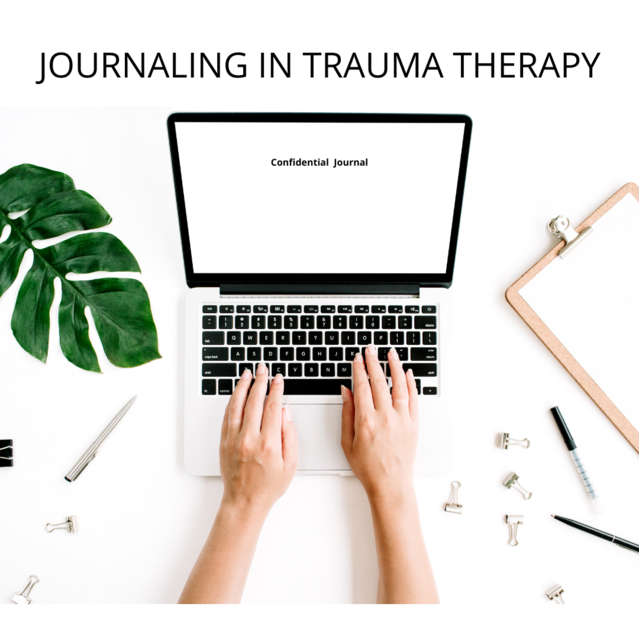Trauma
The Use of Journaling in Trauma Therapy
How to incorporate an electronic journal in the COVID era.
Posted November 30, 2020 Reviewed by Ekua Hagan

Journaling is an ancient tool for reflection and personal growth that teachers, counselors, and coaches of many kinds deploy to assist learning. It can be done on a regular basis, daily or weekly, or sporadically when inspiration strikes.
For several years I’ve invited all my clients to keep a joint online journal with me. They make entries in a variety of ways about what they are experiencing, observing, or thinking about. I make occasional responses from a therapeutic perspective. This has proven so valuable to the therapeutic journey of many of my clients that I find it hard to imagine how I’d do therapy without it.
Studies on the Effectiveness of Journaling
Over the past decades, several studies have reported the therapeutic benefits of journaling.
Online journaling and the use of expressive writing has been found to be more effective for wound recovery than journaling on routine topics and shown to be effective to mitigate symptoms of cancer, AIDS, asthma & rheumatoid arthritis, and to enhance self-regulation.
While a joint journal means significantly more work for both the client and the therapist, the benefits are so many that I use one with children, teens, and adults, and parents. Benefits of joint journaling for trauma integration include:
- Attuned response. Attunement is the act of giving complete, non-judgmental, responsive attention to another person, providing a supportive connection through attentive verbal and nonverbal responses. In healthy personality development, children receive generous amounts of attunement from caregivers, especially in early childhood.
When attunement is obstructed it impedes the natural sequence of brain development and all other aspects of child development suffer. If an infant does not receive enough stimulus, sustained attention, love, caring, and warmth on a predictable basis, or if disruption of care occurs that is overwhelming or prolonged, developmental trauma can result.
A major goal in trauma therapy is for clients to experience an attuned relationship with the therapist. Some clients, particularly those who experienced major adversity in relation to a key caregiver in infancy or childhood, have never experienced attunement. Others may have received consistent attunement from caregivers, but were impeded in other critical ways by trauma.
As a therapist, I read client journals with an eye for signs of misattunement and I try to attune my response to the needs of the client. Often, especially in the early stages of therapy, the client writes entries that need a prompt response from me. I work out an understanding with each client about how they will use their journal and I make it a priority to read entries promptly and respond. Over time, the need for immediate responses varies as the client’s journey of trauma integration unfolds.
- Connection between sessions. A joint journal provides an ongoing means of connection between my clients and me between sessions, something essential for many clients at certain stages due to the nature of the work they are doing. Clients who are trauma survivors, or exposed to a lot of stress in the present, need this kind of support to be able to first co-regulate and learn over time to self-regulate.
Sometimes we do this by phone or text (encrypted to ensure confidentiality). Such an exchange provides a sense of connection that is required by most clients between sessions.
- Self-regulation. Journaling requires reflection, which engages the upper brain. Even the task of typing activates some level of bilateral integration of the left and right sides of the brain since it involves two hands, just like scribbling with two hands. The thought processing and typing required to journal help a client to distance from intense emotions and engage executive functions.
Journaling can trigger emotional flooding, of course. Therefore, it’s important the therapist guides each client according to their context on how to use journaling in different phases of the therapy process.
- Safe regression. As an expressive therapist, I incorporate elements from different creative therapy modalities. Often during sessions, clients enact their day-to-day stories using role reversal. Journaling is invaluable in assisting with this, helping clients to surface material that we then work on within therapy, as well as providing them the opportunity to go further with it after a session. Used in this way, journaling is like an entry point to the unconscious.
Spontaneous expressive writing leads to safe regression. There are some experiences and memories that have to be dealt with, but we don’t want this too early in the therapeutic process and not more deeply than the client is ready for. Part of our job as therapists is wisely managing the risks required for trauma integration. We need to help clients engage difficult material at a pace they can handle without triggering hyper/hypo alerts (more info ETI trauma integration roadmap).
A useful strategy is a repetitive engagement with such issues at a safe level, across a series of sessions. This builds a sense of safety for the client, allowing the engagement to go gradually deeper, a process I call Safe Regression. For some clients, journaling is perfect for this, it’s always available, puts the client fully in charge, and provides an accumulating record for later use.
- Self-expression. Some clients find it easier to express themselves indirectly. Some will express in journal thoughts and fears that they have never shared with anyone. I encourage clients to use different kinds of creative expressions if writing is not their first inclinations. Some clients share images, scribbling, and art-making, and pictures that they have taken.
- Sustainability and progress reports. A joint journal is one of the tools I use to help clients design a sustainability plan (more info in the blog). Journaling can be used to do progress reports or to document a change of symptoms or describe problems. Often parents write me updates that require my assistance with teachers, medical doctors, or contacting other clinicians.
One of the biggest challenges trauma therapists face is that trauma integration requires deep therapist involvement with the client. It’s not just a matter of providing emotional support; it’s also that therapy needs to target all aspects of wellness in order to enhance a client’s capacity to endure pain and experience joy.
In the common therapy routine of once-a-week sessions, it’s difficult to provide what trauma survivors need to progress. More often would be beneficial, but many clients don’t have the time or resources required for more sessions. Joint journaling is a powerful and flexible tool for maintaining connection and providing attuned responses for clients who need ongoing containment therapy or intense trauma therapy.


